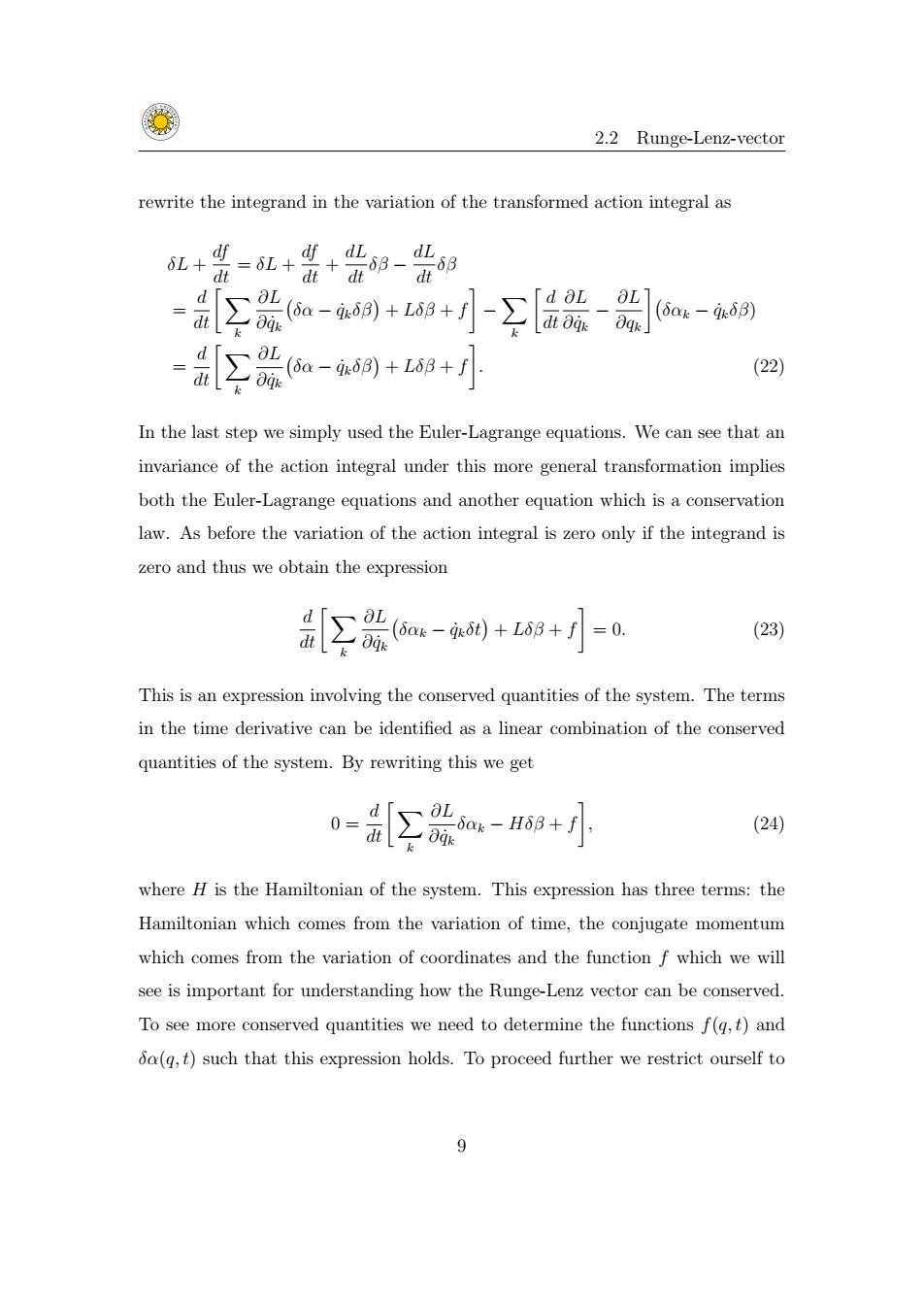正在加载图片...

2.2 Runge-Lenz-vector rewrite the integrand in the variation of the transformed action integral as 6L+ df =6L+ +d业8- dt dtdt dt d 歌-+69+小- d aL aL dt dt∂9k (6ak-9k6B) 8qk [∑0m-40+u9+小 d (22) dt In the last step we simply used the Euler-Lagrange equations.We can see that an invariance of the action integral under this more general transformation implies both the Euler-Lagrange equations and another equation which is a conservation law.As before the variation of the action integral is zero only if the integrand is zero and thus we obtain the expression d dt a亚(6ak-gi0)+L6B+f =0. (23) This is an expression involving the conserved quantities of the system.The terms in the time derivative can be identified as a linear combination of the conserved quantities of the system.By rewriting this we get 0= d dt 0Las-H6+f小 (24) where H is the Hamiltonian of the system.This expression has three terms:the Hamiltonian which comes from the variation of time,the conjugate momentum which comes from the variation of coordinates and the function f which we will see is important for understanding how the Runge-Lenz vector can be conserved. To see more conserved quantities we need to determine the functions f(g,t)and a(g,t)such that this expression holds.To proceed further we restrict ourself to 92.2 Runge-Lenz-vector rewrite the integrand in the variation of the transformed action integral as δL + df dt = δL + df dt + dL dt δβ − dL dt δβ = d dtX k ∂L ∂q˙k δα − q˙kδβ + Lδβ + f − X k d dt ∂L ∂q˙k − ∂L ∂qk δαk − q˙kδβ) = d dtX k ∂L ∂q˙k δα − q˙kδβ + Lδβ + f . (22) In the last step we simply used the Euler-Lagrange equations. We can see that an invariance of the action integral under this more general transformation implies both the Euler-Lagrange equations and another equation which is a conservation law. As before the variation of the action integral is zero only if the integrand is zero and thus we obtain the expression d dtX k ∂L ∂q˙k δαk − q˙kδt + Lδβ + f = 0. (23) This is an expression involving the conserved quantities of the system. The terms in the time derivative can be identified as a linear combination of the conserved quantities of the system. By rewriting this we get 0 = d dtX k ∂L ∂q˙k δαk − Hδβ + f , (24) where H is the Hamiltonian of the system. This expression has three terms: the Hamiltonian which comes from the variation of time, the conjugate momentum which comes from the variation of coordinates and the function f which we will see is important for understanding how the Runge-Lenz vector can be conserved. To see more conserved quantities we need to determine the functions f(q, t) and δα(q, t) such that this expression holds. To proceed further we restrict ourself to 9